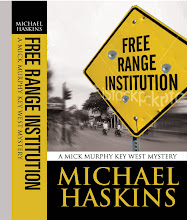Jimmy Breslin could write a grocery list and I would want to read it. His collected columns, in at least two books, are exciting reading because of how he records characters, especially criminal characters. The small details he catches are wonderfully revealed in his writings. While he often uses wit in presenting details, the underlying facts of criminals, especially the old Mafia, comes through as he attended, cold, brutal, and often foolish.
Any mystery writer that uses organized criminals as characters, or even as background, should go and get Breslin’s new book, “The Good Rat.” Breslin spent time researching the incidents he writes about and attended the trail of the two NYPD detectives, Stephen Caracappa and Louis Eppolito, who were recently convicted as murder-for-hire contract killers for the Mafia.
Nothing in the organized criminal life is sacred to Breslin, not the legends, long departed, or the new Mafia and its misfits. He definitely eliminates any belief by today’s organized criminal in the Mafia’s blood oath, Omertá – silence.
“The Good Rat” is in the research section of my home library and it should be in every writer’s, because it takes the glamour out of organized crime and brings it down to the human level, greed, and power and how it doesn’t always fall to the brightest.
For two reasons, Breslin has included part of the court transcript in the book. One reason, he tells the reader, is because he couldn’t write it better than it played out in court. The second reason, though he doesn’t clearly admit it, is some of the testimony is so unbelievable, written as prose might leave the reader doubting its honesty.
In the ‘90s, many of us were infatuated with the trials and tribulations of the Teflon Don, John Gotti and his henchmen. Breslin’s handling of Gotti, and how he helped destroy the old guard Mafia, made me stop and wonder why he was handled with such kid’s gloves in the media during his trials. Gotti, Breslin writes, broke the rules to get to be boss and, in so doing, began the decline of the Mafia.
The FBI, which denied the existence of the Mafia thanks to J. Edgar Hoover, has, in the past decade, brought many of the foot soldiers, made men, and bosses to justice; more often than not, because of the failure of Omertá among its members.
Breslin writes with authority, because he knew many of the old time Mafia bosses and drank and ate at their hangouts. His recounting incidents are often humorous, but the underlying facts show blown up egos and callous individuals.
I think some of the humor that Breslin has put in all his writing, columns, books and magazine articles, is because if he only presented the facts to us, the excitement read into the pieces would be gone and replaced with boredom. He has taken boring individuals, ala Damon Runyon style, and made their story interesting.
A native New Yorker, he grew up with many of the old gangsters and, thankfully, he says, many of them loved to see their names in the paper, so they often wanted him to hang around the same restaurants and bars as they did.
Yeah, it is a good reference book for mystery writers. I mean, come on, how many of us could come up with names like Thomas “Three-finger Brown” Lucchese or Jimmy “the Clam” Eppolito or have a Jewish gangster, Burt Kaplan, working with the Mafia, help bring down two NYPD hit men because he feared an old friend was gonna rat him out first?
The scary part of this book is how matter-of-factly Kaplan talks of robbery and murder, sometimes to friends, during the trial.
Monday, February 25, 2008
Subscribe to:
Post Comments (Atom)

















2 comments:
Thanks for the tip, the book looks good.
I remember reading "The Gang Who Couldn't Shoot Straight" a long time go and loving it.
Book may be very well written and fascinating, but Breslin got the story of Israel Greenwald all wrong.
To learn the real story of Israel Greenwald, one of Kaplan's murder victim's, go to israelgreenwald.com.
Post a Comment